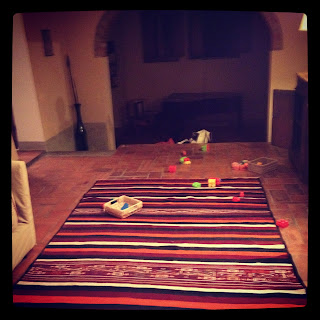Couldn't write any better text then
andreas so I copy and paste what he wrote to introduce priscilla tea's new work @
gloria maria gallery. just go see it!
It is a curious moment for painting which seems to be going through renewed interest, part of the cycle through the art world every 15 years or so. In trying to understand the current moment, I think of a recent painting show I visited, a well known american in berlin artist, and I could not help thinking: This show would look better on an iPad. It seemed that the paintings didn’t really need to exist in the space of the gallery, they could just as well be photos flipped through on a touch screen, their every detail perfectly captured on pixel.
The paintings of Priscilla Tea exist quietly in a space beyond this screen, in a space that is just so much further away. They are paintings that understand this condition, and somehow manage to speak about it without even a mention of hardware or software. They often depict landscapes, sometimes on the edge of towns, though you are not always sure what you are looking at. If you stared long at a screen image without blinking and then closed your eyes, what you would see for an instant, the memory of the image you were looking at, is somehow close to the subject matter of what Priscilla Tea seems to be capturing. Paintings that embed half-erased memories of images on canvas with thick layer upon thick layer of paint. Abstract landscapes of thoughts and negation, skate parks and palm trees in white and blue, these paintings appear a s traffic signs from our subconscious image stream.
Studying these radically minimized landscapes of memory, suddenly I have the urge to imagine that they were made on a computer, I almost can recognize the software that made them, almost but never completely, this software exists just one level below my consciousness, if that was ever possible. Could we sketch in our subconscious? Could we even have subconscious computers? This is what their images would look like.
Through this invisible software, we almost recognize places we have seen before, we almost visualize skate parks and suburban swimming pools, we almost have a sense of the continuous feeling of being on the edge of town, in a softly abandoned suburbia. Yet maybe we are just imagining these, maybe these paintings are just lines and blocks of color and some shapes. Maybe these are abstract paintings after all. Even if we doubt what is really shown here, somehow the images linger, like retinal residue from screens and landscapes.
When you look at Priscilla Tea’s paintings in real life, the surface of the canvas manifests an almost absurd insistence in the shape of these places, because these horizon lines and suburban landscapes are painted over and over so many times that the paint finally acquires a physical depth, the paint itself becomes a place.
This sharp contradiction on how one perceives the paintings online and how one experiences them physically is per- haps one of the few ways we can enjoy painting today. The physical object is allowed to be more than it’s representa- tion. The painting is no longer just an image, it is a physical object, a place even, and perhaps Priscilla Tea already is just preparing the ground for places for which to feel this nostalgia. The work understands the contemporary condition of looking at too many images on screens all day long, of continuously mistaking the real work for it’s mechanical re- production.
The question of painting in the age of the screen persists.
Even in Art fairs, where you walk around to see art, often times the place where you’ll see the most paintings is on the screens of the myriad ipads that art dealers have adopted in their quest to sell more. Browsing paintings on an ipad is easier and sometimes more pleasurable that walking about. Everything is crisp and looks good on the ipad screen, better than the pages of art magazines. So what can a painting offer that it’s photograph doesn’t offer better? And what will happen to paintings when our walls become touchscreens?
In Tea’s most recent paintings, the memories of the places she paints seem to have drowned, burned out, cancelled by aggressive diagonal lines over them. This cancellation is a place in itself, built up by slow, sure, endlessly, almost maniacally repeated brushstrokes that complete a solid yet ephemeral image. This is painting at the moment when our culture has completely digested it’s digital revolution, screen and reality are one, online friends are offline ghosts, and we survive every day in an endless torrent of images, all gone by the time that we close our eyes, except perhaps those insistent landscapes by Priscilla Tea.



































































